James Bond has had more than his share of audacious adventures over the years, but none of them are as literally out-of-this-world as 1979’s Moonraker. Roger Moore’s fourth outing as 007 marked the first, and to date only time the iconic secret agent has gone into outer space.
Love it or hate it, Moonraker was a landmark film for the Bond series in a number of ways – and here are some fascinating facts about the 11th 007 film which you might not have known.
20. The film was rushed out to cash in on Star Wars
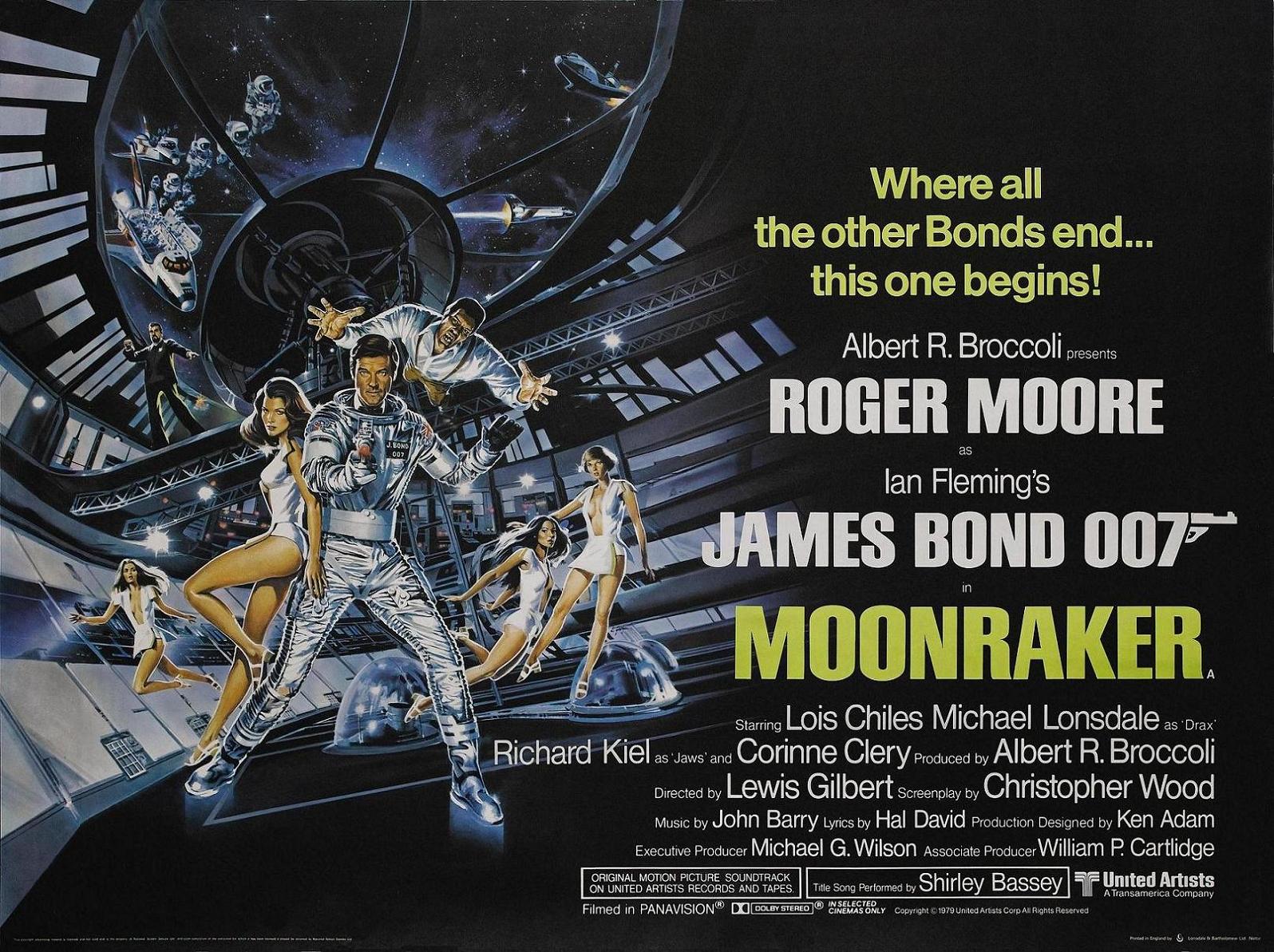
Watch the end credits of the previous Bond movie, The Spy Who Loved Me, and you’ll note they end with the familiar words, ‘James Bond will return – in For Your Eyes Only.’ Originally Eon Productions intended to film that Ian Fleming novel next, but they had a change of heart after The Spy Who Loved Me was thrashed at the 1977 box office by Star Wars and Close Encounters of the Third Kind.
To cash in on the sudden sci-fi boom, producer Albert R. ‘Cubby’ Broccoli decided it was time to send Bond to space, and Moonraker was the logical title with which to do so. The more grounded For Your Eyes Only was put on the back burner, and would not be made until 1981.
19. Steven Spielberg wanted to direct the film but was turned down

Steven Spielberg was a huge fan of the Bond series, and first approached producer Albert Broccoli to offer his services as director of 1977’s The Spy Who Loved Me. The blockbuster director was turned down in favour of established Bond director Lewis Gilbert. Spielberg put himself forward a second time for Moonraker, but again Gilbert got the job instead.
Eventually Spielberg gave up on his Bond dreams, and instead collaborated with George Lucas on an all-new big screen hero, Indiana Jones. Spielberg’s influence can still be felt in Moonraker: as well as featuring returning The Spy Who Loved Me henchman Jaws (named after Spielberg’s hit), Moonraker also makes use of Close Encounters of the Third Kind’s iconic five-note musical sequence.
18. Ian Fleming’s Moonraker novel didn’t involve space travel at all

The first few James Bond movies with Sean Connery mostly stayed true to the source novels of Ian Fleming, but by the time Roger Moore took over the role the filmmakers were taking enormous liberties with the material. This is very much the case with Moonraker, which bears little more than a passing resemblance to the book.
The main difference is that, despite its somewhat spacey title, Fleming’s 1955 novel Moonraker has nothing to do with outer space. In the book, the Moonraker of the title is a prototype missile, rather than a model of space shuttle as in the film. Similar to Casino Royale, a good portion of the novel’s action is taken up by Bond playing cards with the villain, something that was left out of the film completely.
17. Holly Goodhead actress Lois Chiles had previously turned down the female lead in The Spy Who Loved Me
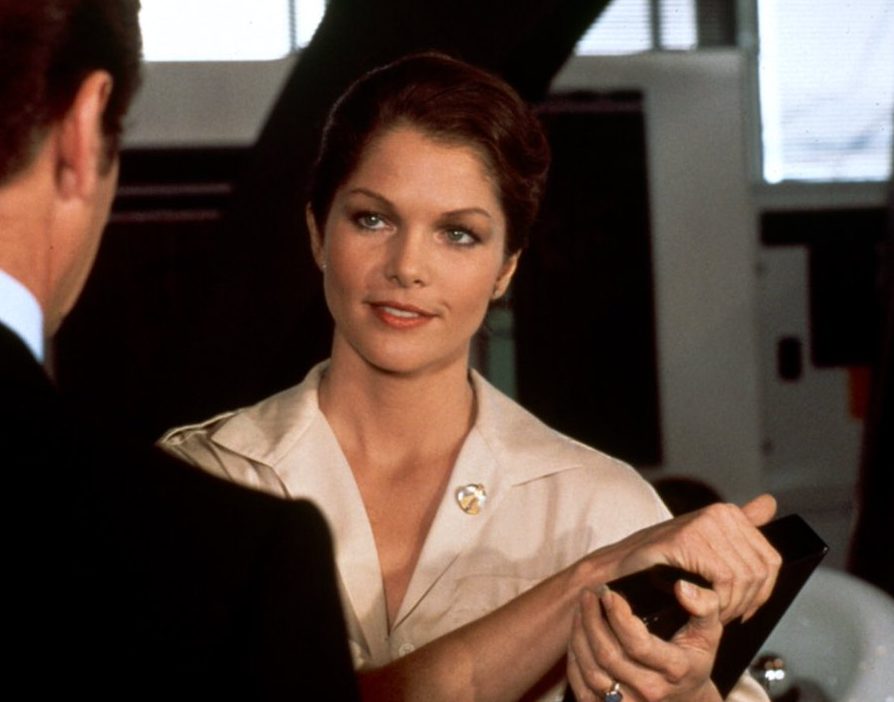
In the Moonraker novel, Bond joins forces with an undercover police officer working in Hugo Drax’s organisation named Gala Brand. This is tweaked just a little in the movie, as the character is a NASA scientist and undercover CIA agent named – ahem – Dr. Holly Goodhead. Taking on the role of the Bond girl with one of the most eyebrow-raising names in the franchise’s history is actress Lois Chiles.
Chiles accepted the role after previously declining to play Anya Amasova, the role ultimately taken by Barbara Bach in The Spy Who Loved Me. The model-turned-actress signed on to play Dr. Goodhead after first choice Jaclyn Smith had been forced to turn the part down, as it clashed with the actress’ commitment to TV show Charlie’s Angels.
16. James Mason was originally going to play Hugo Drax

Early on, the Bond producers had a big name lined up for the part of Moonraker’s villain Hugo Drax. The role was originally poised to be taken by the esteemed British actor James Mason. A screen legend thanks to such classics as North by Northwest and A Star Is Born, Mason had more recently appeared in 1978 hit Heaven Can Wait.
However, as Moonraker was an Anglo-French co-production, the filmmakers were obliged to cast a French actor as one of the leads. For this reason, Mason had to be replaced, and Drax was ultimately played by Michael Lonsdale. (Louis Jourdan, who would later appear in Octopussy, was also considered.)
15. Jaws became a good guy because young fans demanded it
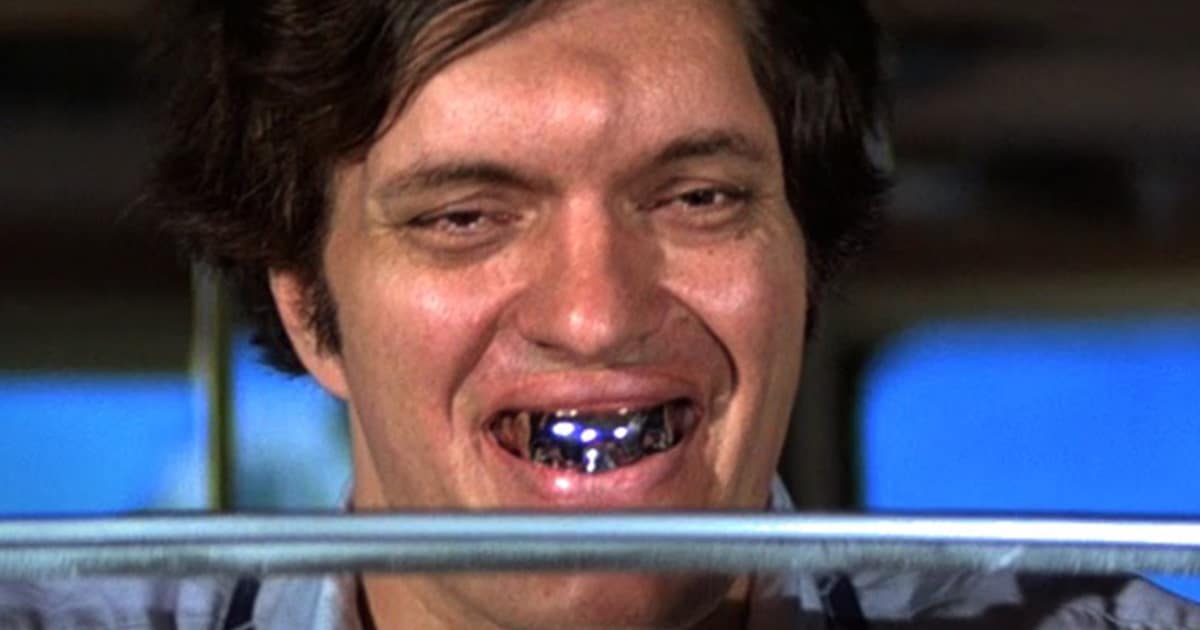
Moonraker marks one of the few times that a Bond antagonist makes a second appearance, with the return of Richard Kiel as Jaws. The 7’2″ actor first portrayed the sinister metal-mouthed henchman in The Spy Who Loved Me. The character proved hugely popular, and Kiel became a celebrity, so it was decided to bring him back.
The plan had originally been for Jaws to remain evil, but the audience reaction prompted a rethink. Eon Productions had received scores of fan letters from children requesting that Jaws become a good guy instead. In response to this, they decided to rewrite the character, making him change his ways and become an ally of Bond in Moonraker’s final act.
14. The film marked the last appearance of original M actor Bernard Lee
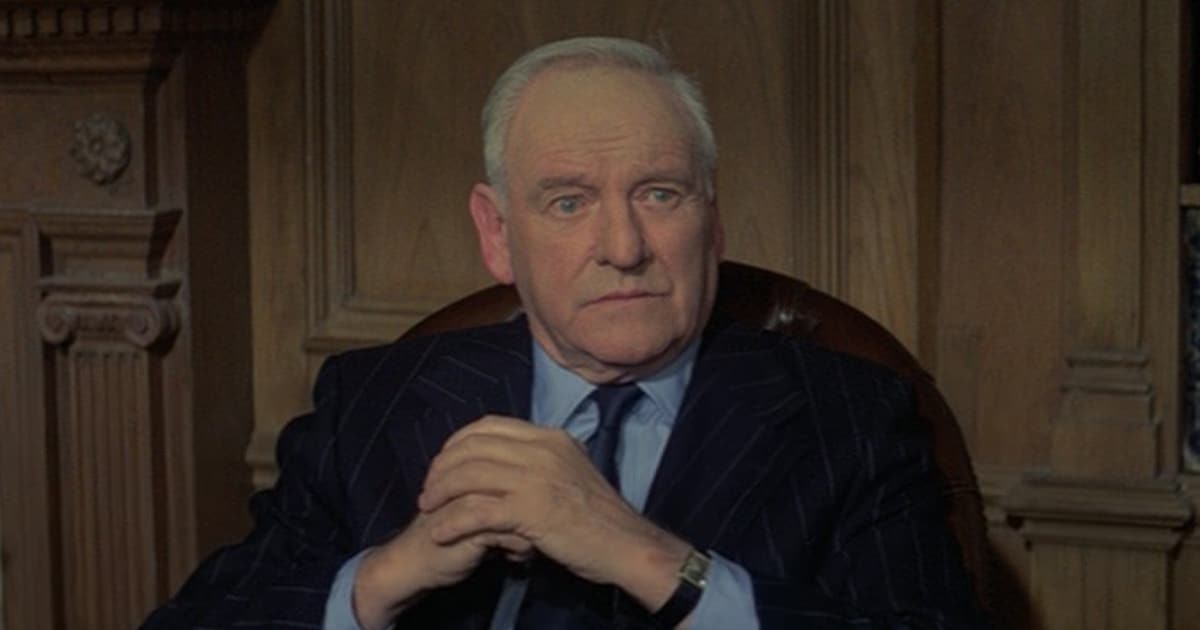
Up to Moonraker, there were only two actors who had appeared in every official Bond movie: Lois Maxwell as Miss Moneypenny, and Bernard Lee as Bond’s cantankerous boss M. Sadly, Moonraker proved to be Lee’s last 007 appearance, as the actor died in January 1981, whilst the twelfth Bond movie, For Your Eyes Only, was in production.
Out of respect to Lee, Eon Productions decided not to recast M straight away, instead omitting the character from For Your Eyes Only. Robert Brown (who had previously portrayed Admiral Hargreaves in The Spy Who Loved Me) was introduced as the new M in 1983’s Octopussy, and he would remain in the role until Judi Dench took over in 1995’s GoldenEye.
13. It was the most expensive Bond movie ever made
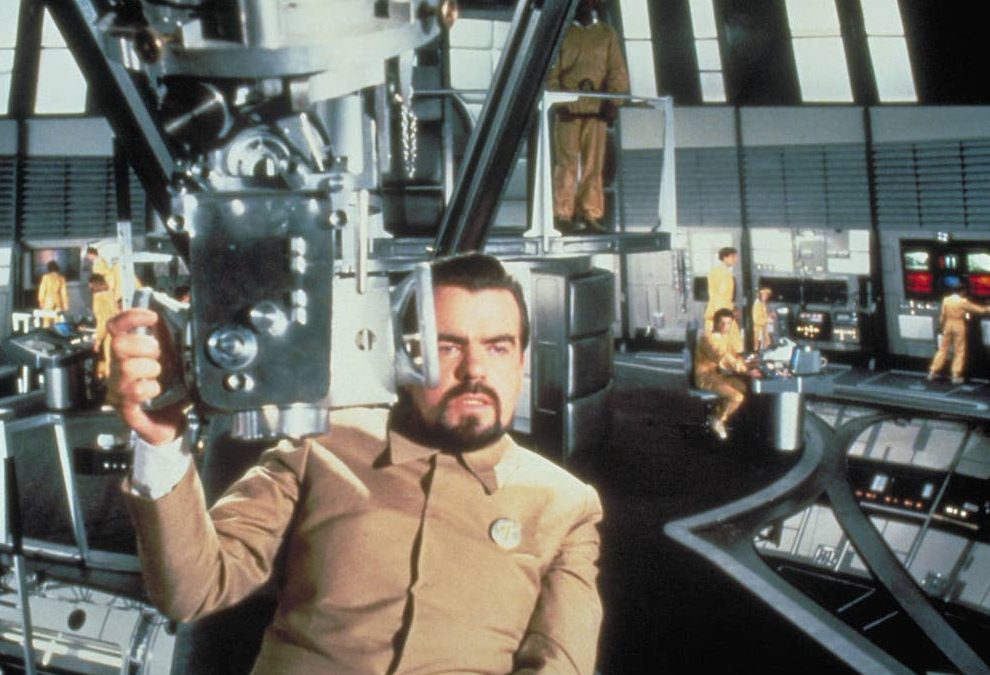
Moonraker was, in all practical senses, the biggest Bond movie yet, with a production budget of $34 million. This might not seem like much by blockbuster standards today, but in 1979 it was a massive amount of money. For perspective, $34 million was more than twice the budget of The Spy Who Loved Me, and more than the first eight Bond movies had cost put together.
Much of this money went into the large-scale sets, wire work for the zero-gravity scenes, and special effects. Subsequent Bond movies have, of course, cost a great deal more, with most recent films Spectre and No Time to Die reportedly costing $250-300 million each. (Of course, inflation has a lot to do with that.)
12. It was the biggest box office hit in the Bond series

Moonraker may have required some hefty investment up front, but all of this paid off financially. By the end of its theatrical run, the film had earned £210.3 million at the global box office. This made Moonraker one of the biggest hits of 1979, and the highest-earning Bond movie ever at the time. Moonraker remained the biggest Bond movie ever until GoldenEye, which made $352.1 million at the 1995 box office.
At present, the highest earning film in the series is 2012’s Skyfall, the only Bond film to date to earn over $1 billion at the box office. Collectively, the 24 official Bond films released to date have made over $7 billion worldwide – and that’s not counting earnings from video, DVD and TV screenings.
11. It was the last time Shirley Bassey sang a Bond theme

As well as being the last hurrah for Bernard Lee, Moonraker also marked the final bow of another key figure from Bond history. The beloved Welsh singer Shirley Bassey performed the Moonraker theme song, which was her third and final Bond theme. Bassey had previously lent her distinctive vocals to two of the best-loved Bond themes, Goldfinger and Diamonds Are Forever. However, she admitted to not liking Moonraker, saying she only recorded the song as a favour to composer John Barry.
To date, Bassey is the only vocalist to perform more than one Bond movie theme song. However, a number of other big names were considered to sing the Moonraker theme, which was written by long-standing 007 composer John Barry with lyrics by Hal David. The producers originally asked Kate Bush, who declined. Frank Sinatra and Johnny Mathis were also contenders.
10. The film’s opening skydive had to be performed 88 times
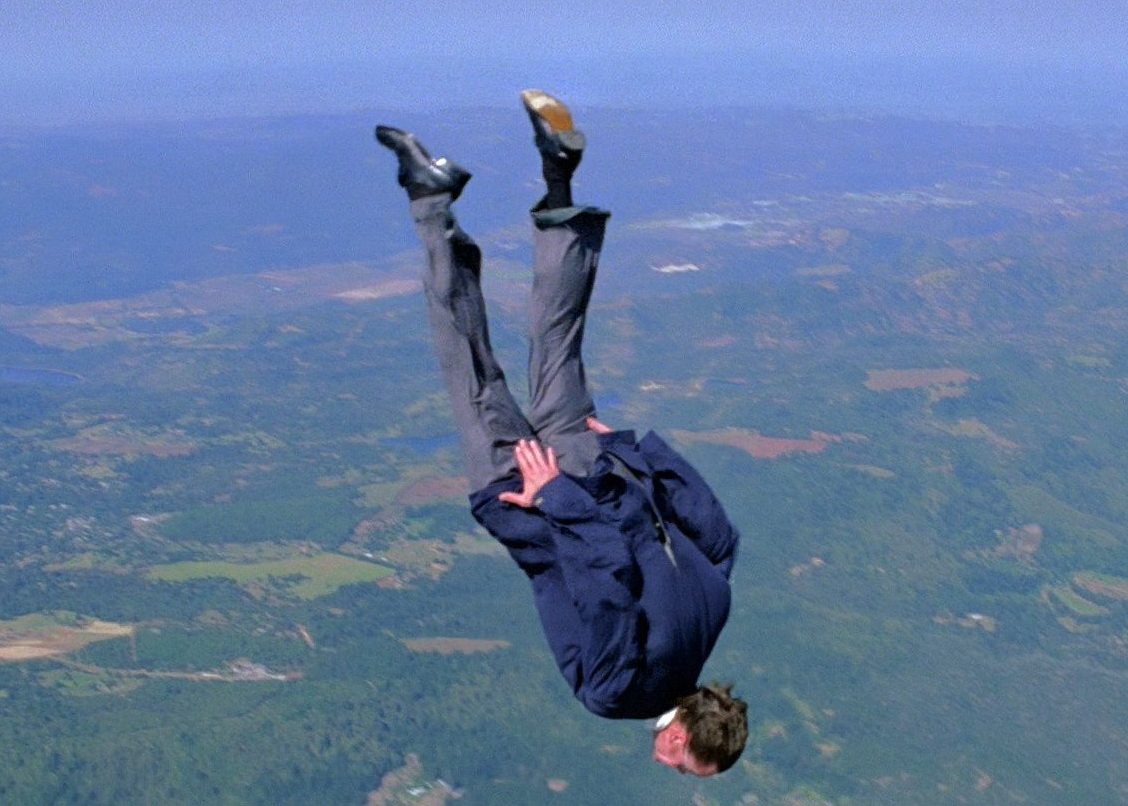
As befits any Bond movie, Moonraker begins with an eye-opening action sequence, as 007 wraps up whatever his previous mission happened to be. In this case it’s one of the most thrilling prologue scenes in Bond history, as the suave spy is forced to jump out of a plane without a parachute. The sequence takes up around two minutes of screen time, but due to its complexity it took a long time to film.
Special helmet-mounted cameras were used, worn by other sky-divers capturing the action. The stunt performers, including Roger Moore’s skydiving double Jake Lombard, had to perform the jump for real 88 times before they’d captured all the footage they needed. The sequence was then finished off with a few close-up shots of Moore and Richard Kiel against a blue screen.
9. Roger Moore was hospitalised during the shoot
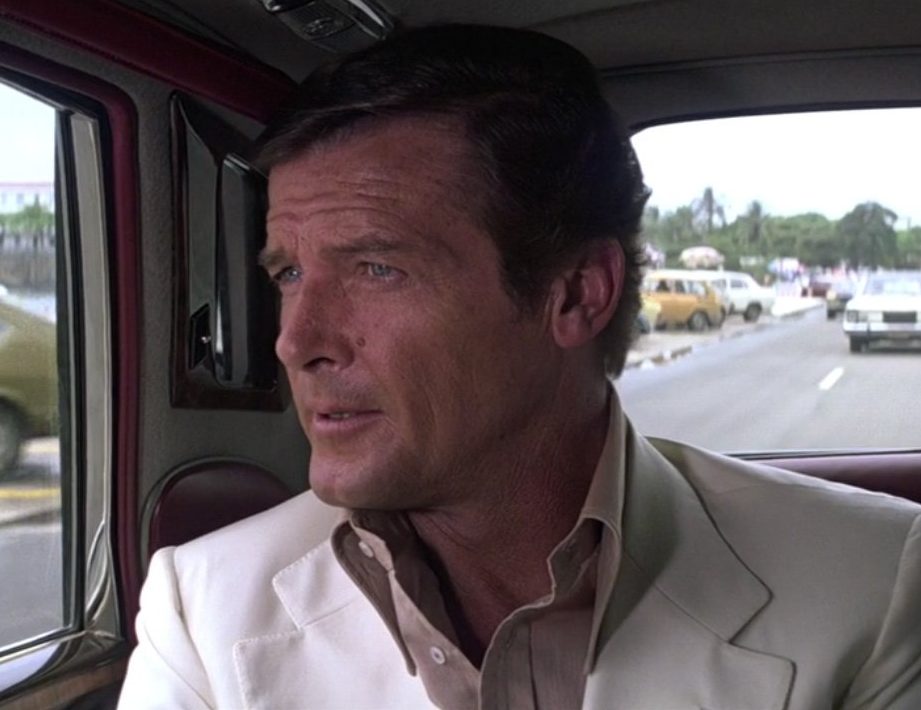
The globe-trotting events of Moonraker see 007 visit Africa, California, Italy and Brazil, all before going into space. When it came time to shoot the scenes in Rio de Janeiro, photography on the film was falling behind schedule. This was due to an unforeseen health emergency on the part of leading man Roger Moore.
The 007 actor, who had not long since turned 51, was hospitalised with kidney stones during the shoot. Because they had fallen behind, when a recovered Moore landed in Rio, he was literally put to work straight away. Immediately after his plane touched down, Moore was put into make-up, and they shot the scenes of Bond arriving in Rio right then and there.
8. A stuntman almost fell to his death shooting the cable car sequence

Another of the most exciting scenes in Moonraker sees Bond and Dr Goodhead come under attack by Jaws on a cable car above Rio. Once again, some of this sequence was shot with the actors against a blue screen, but much of it was shot on the actual cable cars at Rio’s Sugarloaf Mountain, which at its highest point runs as high as 722 feet in the air.
As such, the stunt performers were of course in very real danger when climbing on top of the cars. The crew had a heart-stopping near miss when stunt performer Richard Graydon slipped for real shooting the scene. Happily, Graydon was able to grab on and save himself from a fall which would most certainly have been fatal.
7. Q’s line in the final scene has become one of the most famous Bond innuendos ever

In the memorable final scene, Bond and Dr Goodhead are caught on camera in a compromising position whilst in zero gravity, in view of a roomful of their peers. Geoffrey Keen’s minister of defence snaps, “what’s Bond doing?” To this, Desmond Llewelyn’s Q (who is following the course of the space shuttle instead of looking at the screen) replies, “I think he’s attempting re-entry, sir.”
This dialogue (hand-in-hand with Bond’s “Keeping the British end up, sir!” from The Spy Who Loved Me) has long been one of the best-loved one-liners from the Roger Moore era of 007. It’s also fairly unique among the most celebrated Bond innuendos in that it isn’t a line delivered by 007 himself.
6. British fugitive Ronnie Biggs was offered a cameo in the film in an attempt to lure him out of hiding
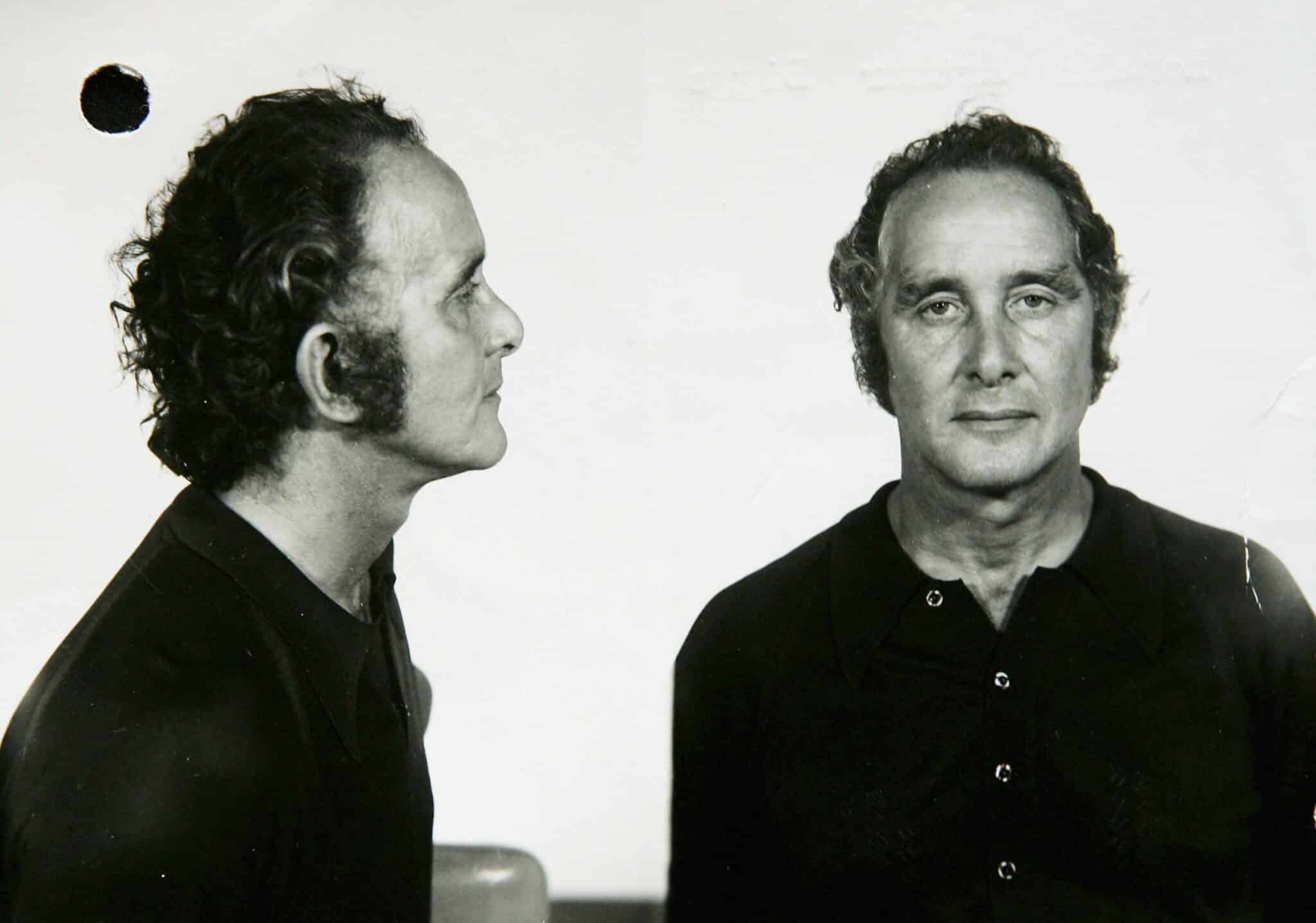
When cameras rolled on Moonraker in Rio de Janeiro, the city already played host to a more infamous British export: Ronnie Biggs, the criminal who gained notoriety for planning the Great Train Robbery of 1963, and later for breaking out of prison and fleeing the United Kingdom. The fugitive proceeded to live in exile for decades, and was known to be based in Rio when Moonraker was in production.
In what sounds like a movie plot, a mercenary attempted to lure Biggs out of hiding by contacting him with a bogus offer of a cameo role in the Bond movie. The plan had been to seize Biggs and smuggle him out of Brazil to a country that would extradite him to the UK. This did not come to pass: Biggs did not return to Britain until 2001, and spent the bulk of his remaining years in prison before passing away in 2013.
5. Moore nicknamed the tricked-out gondola the ‘Bondola’
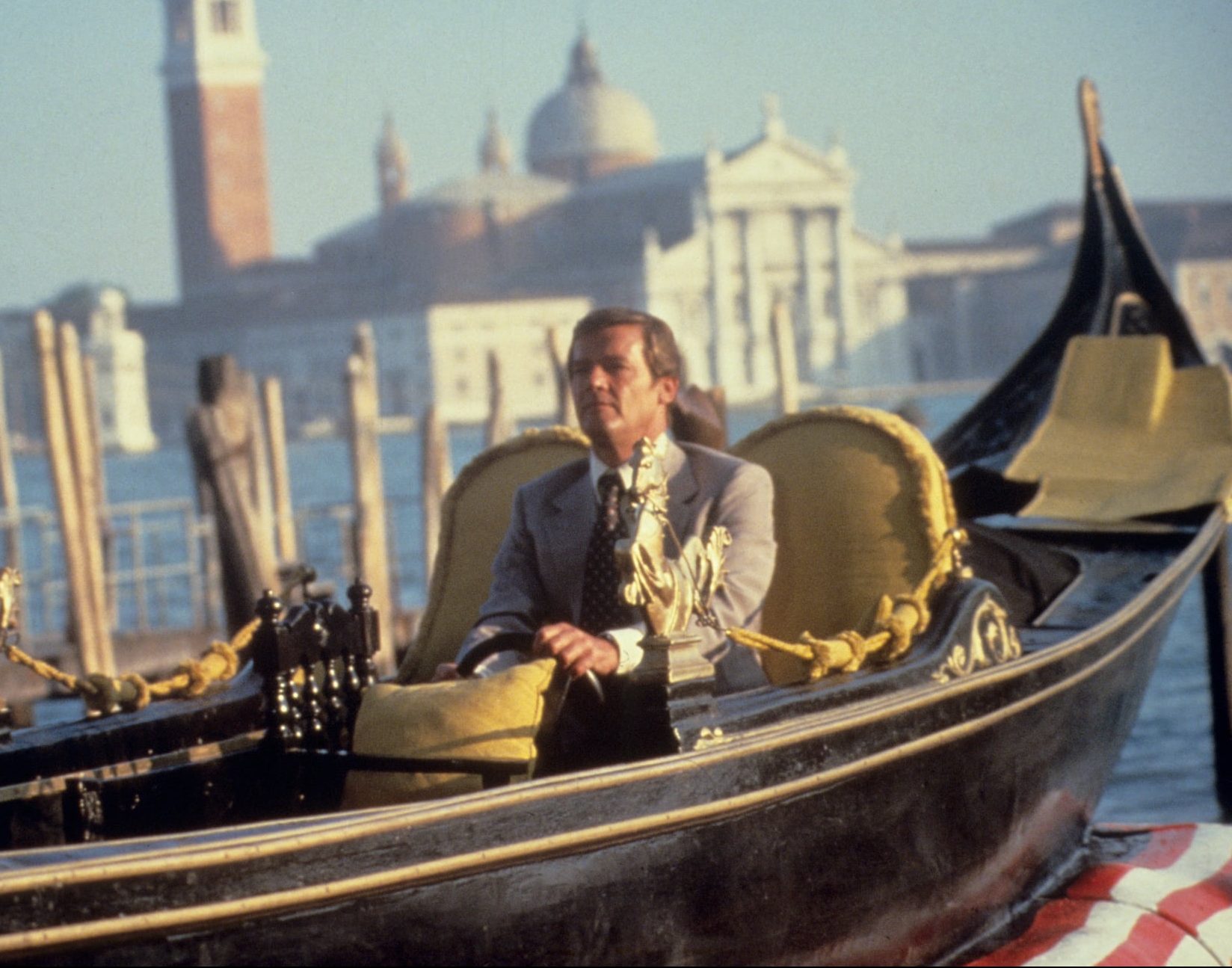
Amongst his other pursuits, James Bond has always been famed for his prowess behind the wheel of a car. Moonraker is an unusual entry in the series in that, beyond a brief moment in which Bond drives a jeep, there’s barely any automobile action at all. Even so, Moonraker ups the ante in another regard: it’s the only Bond movie to feature multiple speedboat chase sequences.
The first (and most notorious) of these takes place on the canals of Venice, when Bond’s gondola is revealed to be a tricked-out speedboat in disguise. Then, as if that wasn’t enough, the vehicle – which Roger Moore himself nicknamed the ‘Bondola’ – also converts into a hovercraft. Later in the movie, there’s a second speedboat chase on the Amazon river, which sees Bond escape on a hang glider.
4. The film was Oscar-nominated for its special effects
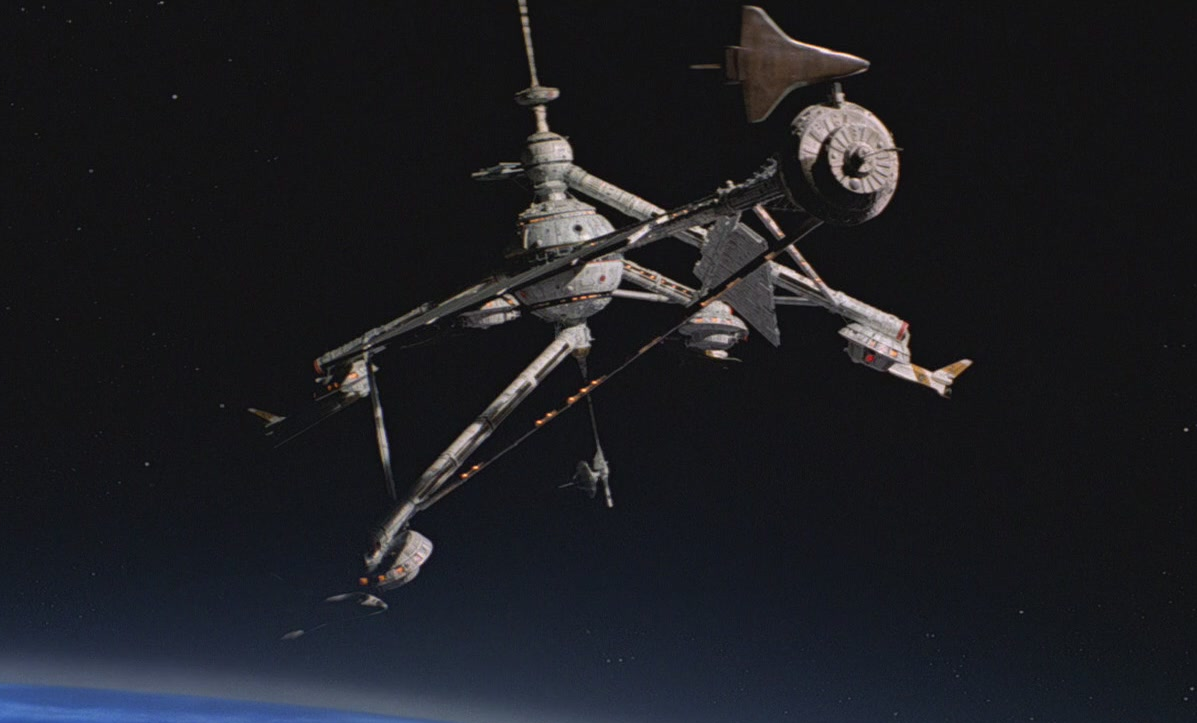
James Bond has always been a big hit with audiences, but the films have never garnered much awards season kudos. Moonraker marks one of the comparatively few times a 007 movie was up for an Oscar – although it didn’t win. The film received an Academy Award nomination for its visual effects, but lost out to another space-bound 1979 hit: Alien.
This was one of 19 times the Bond movies have received Oscar nominations over the decades. However, the Bond filmmakers have only walked away with the Academy Award on six occasions. The Bond Oscar wins to date are Best Sound for Goldfinger, Best Visual Effects for Thunderball, Best Original Song and Best Sound for Skyfall, and further Best Original Song wins for Spectre and No Time to Die.
3. The Spy Who Loved Me’s Barbara Bach almost made a cameo

As well as Richard Kiel’s Jaws, Moonraker was originally going to see the return of another key character from previous Bond movie The Spy Who Loved Me. Until quite late in the day, Barbara Bach was poised to briefly reprise the role of Major Anya Amasova, 007’s partner and love interest in the earlier film.
Reportedly, Bach’s cameo would have been in the scene which also sees the return of Walter Gotell as KGB boss General Gogol. The scene in the final film sees Gogol in his bedroom, being informed about the Drax situation over the phone, while a woman waits in his bed. The plan had been that this woman would be Anya, but this idea was scrapped only weeks before filming.
2. Bond only shoots a gun once in the whole movie

James Bond has always been a trigger-happy hero, gunning down scores of bad guys over the years. Moonraker is a surprising anomaly in this respect, as 007’s firearm use is very limited indeed. The secret agent only fires a gun once in the entire movie – and it isn’t even his signature Walther PPK. Instead, it’s the shotgun Bond brandishes in the scene when Drax invites him pheasant-shooting.
This sequence demonstrates how Bond was in some ways moving with the times, as our hero expresses a distaste at the idea of shooting defenceless birds for sport. (This was likely inserted at Moore’s request, as the actor hated bloodsports and disliked guns in real life.) As such, Bond deliberately misses the pheasant – and takes out Drax’s sniper hiding in the trees instead.
1. It was the last Bond movie from director Lewis Gilbert

As well as Bernard Lee and Shirley Bassey, Moonraker was also the Bond swan song for director Lewis Gilbert. Gilbert was enlisted to call the shots on Moonraker soon after directing previous instalment The Spy Who Loved Me. Years earlier, Gilbert had also directed what was initially Sean Connery’s last film as Bond, 1967’s You Only Live Twice.
Outside of his three Bond movies, Gilbert’s best known films have been considerably more down to earth and introspective. He directed Michael Caine’s 1966 hit Alfie, as well as the 80s comedy-dramas Educating Rita and Shirley Valentine.
